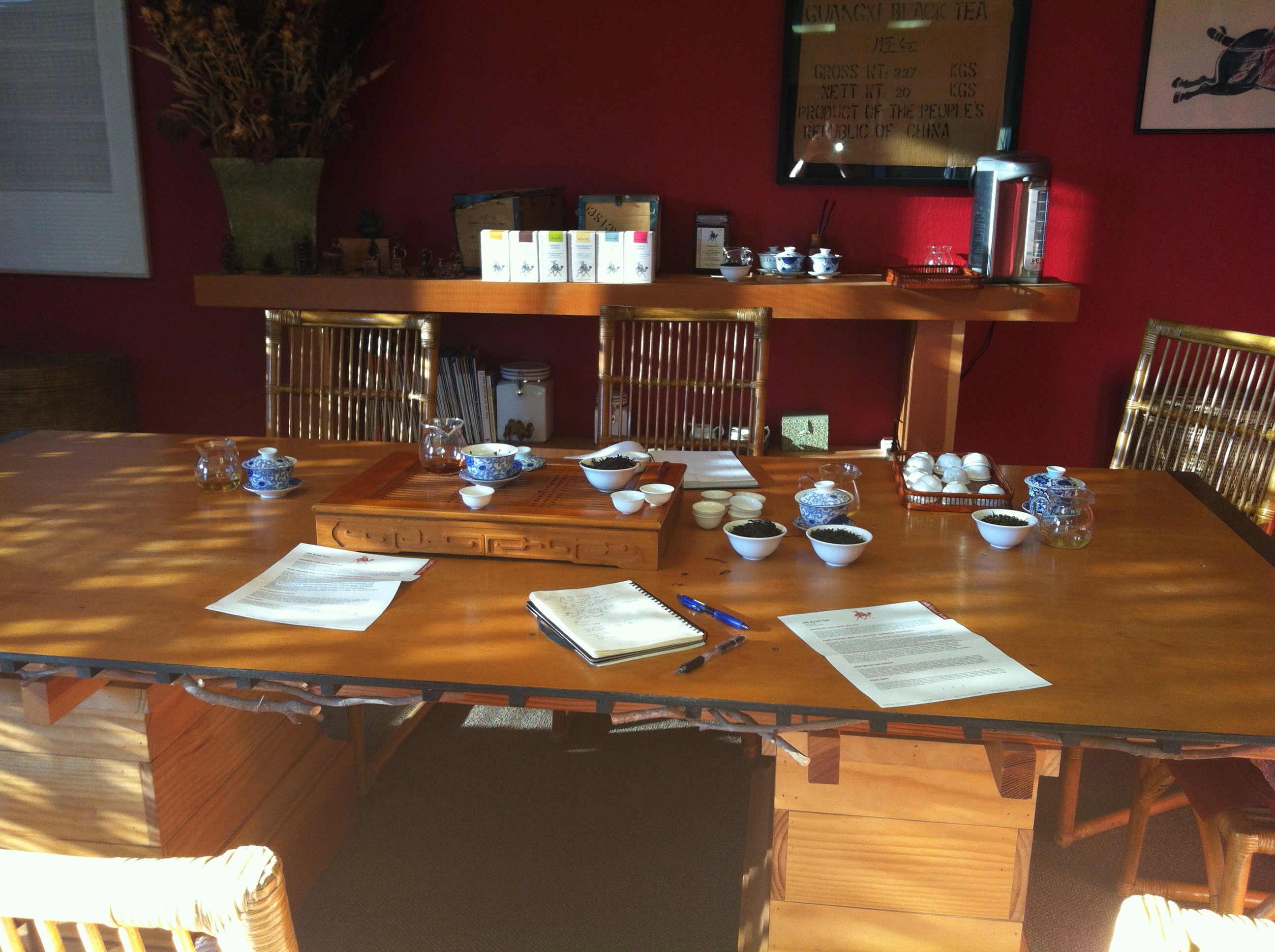
Who put Iron Goddess in a teabag?
Superb quality tea leaves with a do-good spin is not what you’d associate with tea bags, those soggy limp sacks spreading brown stains at the side of a saucer. Granted, a lot of good tea companies are now in the tea bag biz, but one new player, whose purist slant — no vanilla/verbena/cherry blend available — is a surprising new addition. Silk Road Teas, the boutique, high end purveyor of rare and artisan teas whose owners have traveled to hidden areas of Asia for over 16 years in search of the perfect leaf, now have a line of yes, tea bags. Owners Ned and Catherine Hegearty introduced their new product at the huge (more than 1,300 exhibits) Fancy Food Show in San Francisco this past January.
Now it’s one thing to go into the tea bag biz with a nice black tea (and Silk Road Teas does have one), but to include Iron Goddess, a famed oolong? Really? Also known as Tieguanyin, Iron Goddess is a beloved oolong for those passionate about the complexities of taste and changes over time. It has a fresh, grassy aroma and a non-astringent, clear, sweet taste that becomes deeper and more intense over multiple infusions. But first, the bag: It’s made of high quality mesh which is big enough to let the leaves expand to their full flavor.
Back to the tea. For this tea,the leaves are not too big as to crowd the bag, but big enough to unfurl to their taste potential when infused. Speaking of water, it’s important to use good quality water for good quality tea. (more on this in other posts.)

Here is the teabag in the cup before any water is added. Note the open space around the tightly furled balls of tea. (One theory is that Iron Goddess got its name from tightly rolled balls pinging against the teapot. Ah, stories!). Now look at the teabag after its first infusion. The leaves are filling out the bag. The taste is fresh but without complexity. After the second infusion, the tea becomes more interesting. For the third infusion, which was steeped for around 4 minutes, the tea has more taste and has the characteristic energizing feel of good oolong.
The leaves are filling out the bag. The taste is fresh but without complexity. After the second infusion, the tea becomes more interesting. For the third infusion, which was steeped for around 4 minutes, the tea has more taste and has the characteristic energizing feel of good oolong.  Still, no astringency. Note that the bag is much plumper with tea leaves.
Still, no astringency. Note that the bag is much plumper with tea leaves.
Fun finding: there is hardly any liquid in the saucer after the tea was transferred from the cup to the saucer. No soggy bag here! And the leaves could probably be steeped again.
A note on the cup and saucer: A teacup, rather than mug, was used for this tasting. For more tea enjoyment, use smaller cups. Taste is more concentrated and you you might even slow down, inhale the aroma and then take a sip.
Silk Road has even come out with a decaf green tea bag, which has the delicate aroma and body you would associate with their bulk teas.
Now for the do-good angle. The loose tea is packed into the teabags in China, then sent to San Rafael (Silk Road’s base) where developmentally disabled adults put the bags into individual boxes and carefully put a seal on each one. A portion of the profits go to a local organization in Northern California that teaches teens to cook meals for cancer survivors. Any cynics can now leave the room: The Heagertys are the real deal. And their teas, bagged or loose, are wonderful.


Loved the article. I have ordered many times from Silk Road and have always been pleased. I will have to try the new bagged teas. Helping others as they are is so important and very admirable.